
The Lincoln Park Wilderness
March 2, 2021 | Topics: Spotlight, Stories
Lincoln Park is the largest and most thoroughly developed part of the nearly 900-acre Milwaukee River Greenway. Its 313 acres boast a large pavilion and outdoor swimming pool, 9-hole golf course with clubhouse, several soccer fields, baseball diamond, playground, paved trails, and more—along with, Hampton Avenue, a major east-west thoroughfare, and the Milwaukee River Parkway, which runs north and south, bisecting the park. All of which make it an unlikely place to look for the thing that most draws me to a park: urban wilderness.
Until today, the wildest thing I’ve known to do in Lincoln Park has been to hop in a kayak, paddle around the several islands and fight the current to get upstream. Even today, my intention was to revisit a scenic view I thought might be enhanced by last night’s snowfall. Having a wilderness adventure was far from my thoughts and expectations. But, as so often happens in life and photography, if you leave yourself open to unexpected possibilities, not settling for what you already know, you just might find something new and lovely.
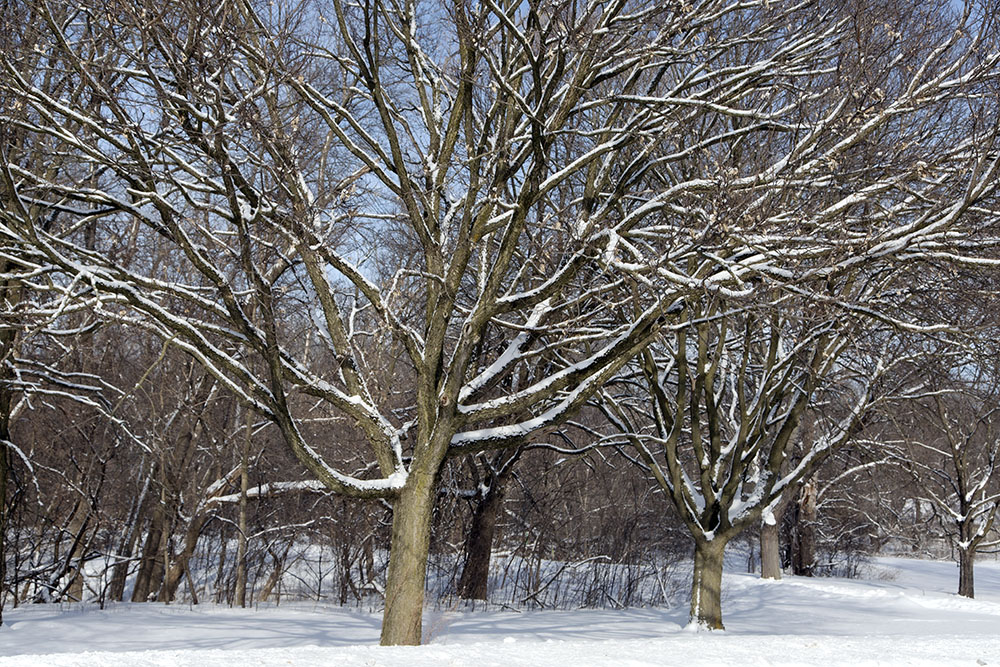
The parkway runs through one of two large islands and is a favorite place to park the car when I go there. The view I’d anticipated, of a small, wooded island to the east visible from the north parkway bridge, was disappointing. The new snowfall had not coated the trees sufficiently to brighten up the limbs and branches, as I’d hoped. So, I set out for a brisk walk in the sunny, 9° morning.
When I saw tracks, human ones, leading out onto the frozen river and all the way across to the other large island, I was immediately inspired. That would be a new challenge. Caution got the better of me, however, and I didn’t venture out. The main channel of the river was quite wide, and the temperature a bit too frigid for my liking.

That was nearly the end of my visit. Then, as I drove past the golf course on Hampton Avenue on my way to somewhere else, the light on a stand of snow-flocked evergreens caught my eye and I did a U-turn to park in the lot and explore. You might think, after over a year spent as Artist in Residence, that I would have visited every part of the Greenway, that there is nothing left unexplored. And, in fact, that has been one of my goals. But suddenly I realized that most of the golf course was an unexplored corner. Not being a golfer, it hadn’t occurred to me to walk around on it. Winter, however, transforms a golf course into a scenic realm with extensive vistas of open fields and meadows.
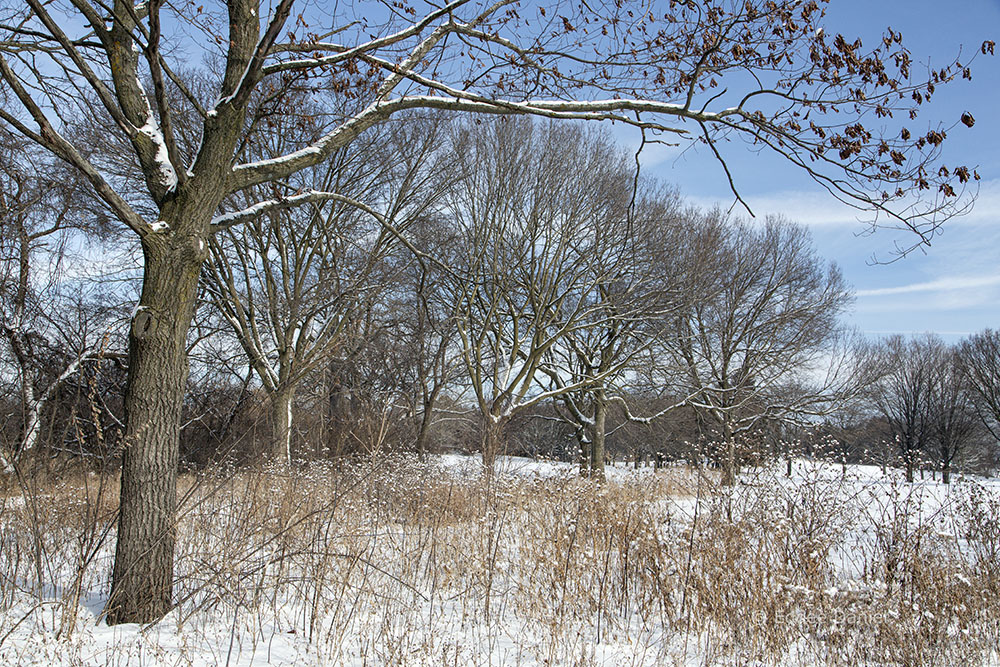
I set off across the wide expanse of hilly, snow-blanketed terrain. It proved not only suitably scenic, but utterly unpopulated. Traffic sped by on I-43, but the sound was muted; the vehicles seemed somehow farther away than I knew them to be. I noted, with chagrin, a pair of fresh cross-country ski tracks, wishing I’d been there in time to catch them in action. Solitude in nature is fine and welcome—until I need an elusive “human element” to provide context to a landscape or balance out a composition. A little ironic, I suppose, to go out seeking solitude and then, in succeeding, to yearn for company.

After wandering awhile, wading across hillsides, I made my way down to the frozen river. Here it wasn’t the broad main channel but the east loop, which is quite narrow. I stepped out onto it without hesitation. Hard as concrete. No sound of cracking.
And then I knew why I had come. The mysterious east island was within reach.
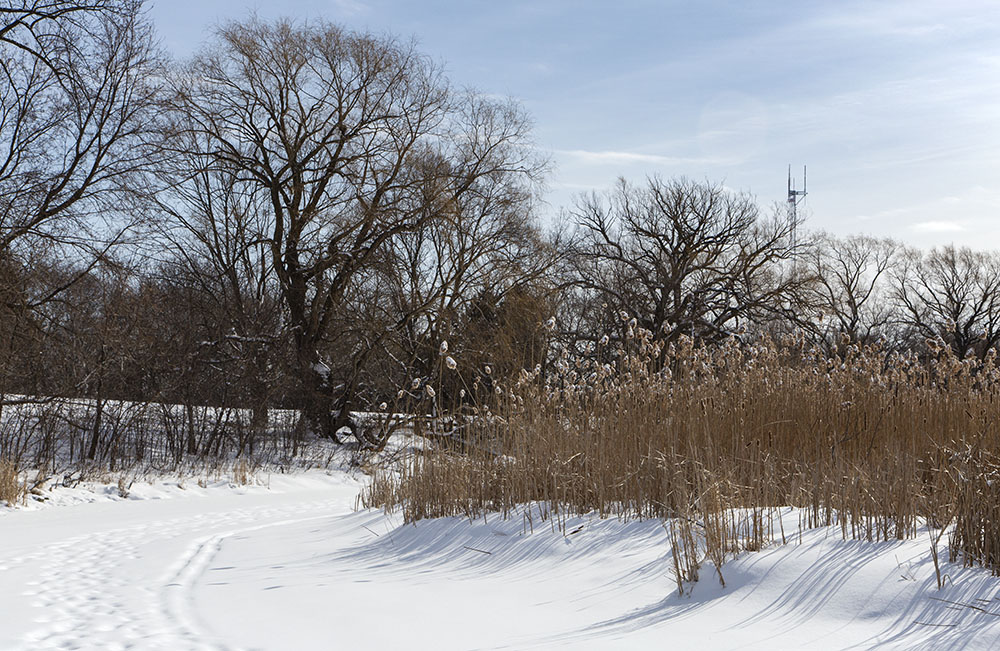
I’d kayaked here, circumnavigating the island, but I’d never set foot on it. The snow on the ice was about a foot deep, as in most places, but when I stepped up onto the island I sank up to my knees. As if the island didn’t want me to enter. I slogged up a short slope to level ground. The drifts reached my thighs in places. The exertion of plowing through them expunged the cold. Sweat took its place. True wilderness is not an easy place to visit—nor should it be.
The island turned out to be far larger than I’d imagined. A level, snow-bound meadow stretched off into the distance. I laboriously crossed it, finding no animal tracks. One set of footprints, though not fresh, indicated I was not the first human to find my way here. I gratefully picked up their trail, which led into a dense woodland that filled the north end of the island. Entering, the silence grew immense. No more freeway traffic, no sound at all that suggested I remained within the city. No airplanes flying overhead—at least for the moment. Nothing but nature, trees muffled in snow, winter birds flitting through the branches.
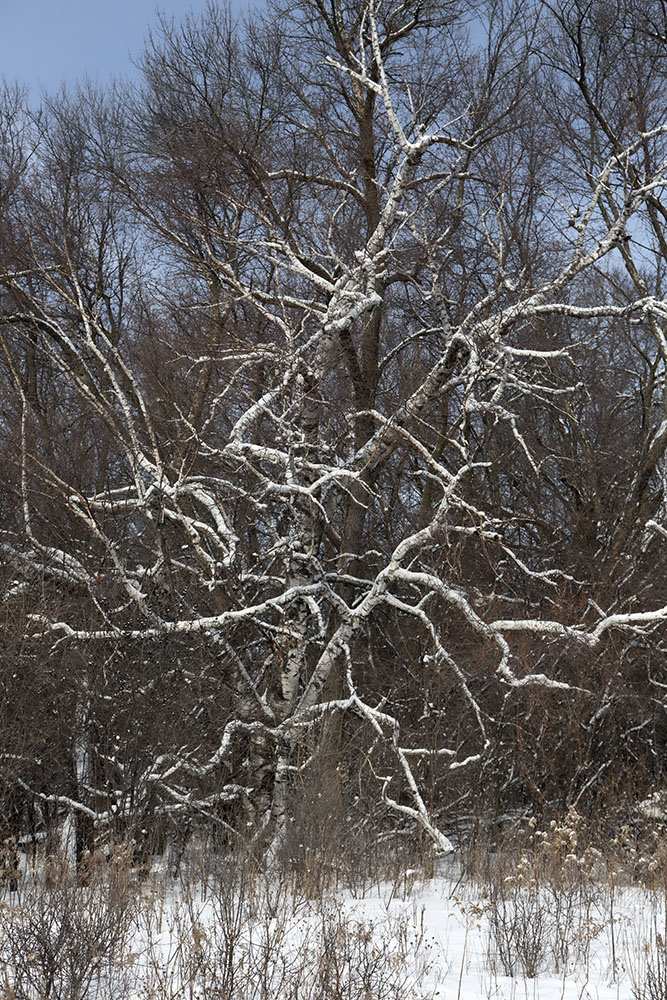
The holy grail of urban wilderness is a place where the serenity of nature prevails, where—illusory though it may be—the urban appears to be superseded by the wilderness. The surprise was discovering it here in Lincoln Park where I had no thought of seeking it. What a gift, I thought, to be able to stand amidst this silence, in an urban forest, on an urban island, in an urban river, surrounded by a million people and feel as far away as the high sierras.
Taking a closer look at the birds darting noiselessly back and forth, I discovered that most of them were robins. Working my way through a thicket of mostly buckthorn I suddenly realized I was surrounded by them, dozens of them—big, fat red-breasted robins. Clearly well fed. The immediate source of their nourishment was obvious: black buckthorn berries, shriveled though they were with the cold. The birds plucked at the berries contentedly, unconcerned, apparently, by my presence.
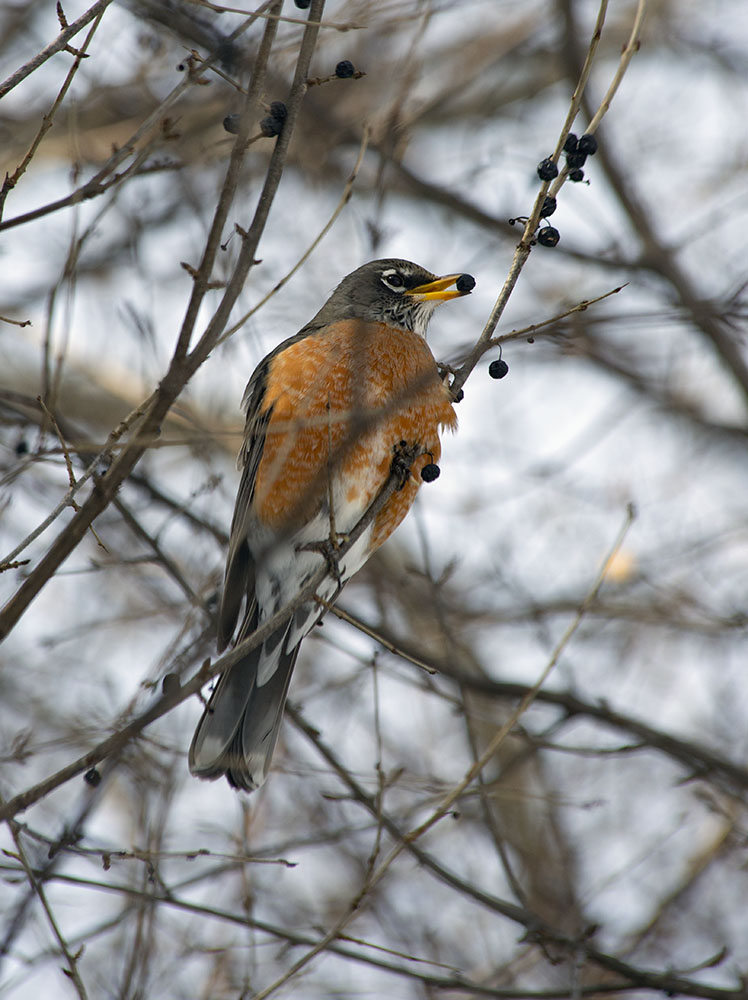
Communing with the robins, and trying to catch them with my camera, occupied enough time that I then headed back out to the frozen channel. Old ski tracks and footprints showed it to be a regular thoroughfare at this point. None deviated onto the island. Back on the golf course, I followed a likewise popular ski trail, still devoid of skiers, back to the clubhouse and parking lot.
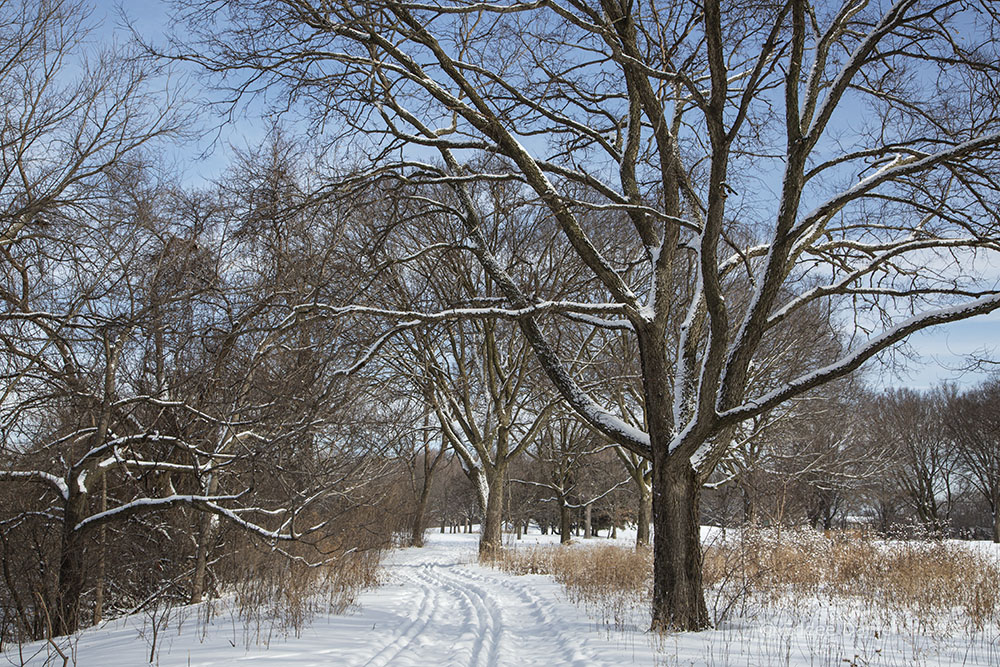
In the end, what did I learn from my adventure in the Lincoln Park wilderness? There was nothing particularly special about the island, nothing really to draw the attention of most people, nothing to encourage the effort it takes to get there. Just a small piece of isolated land left mostly to the plants and animals that live there. I suppose that is exactly what I find appealing. And now that I’ve scratched that itch, I see no reason to ever go back. No reason to disturb that peace.
Eddee Daniel is a board member of Preserve Our Parks.

